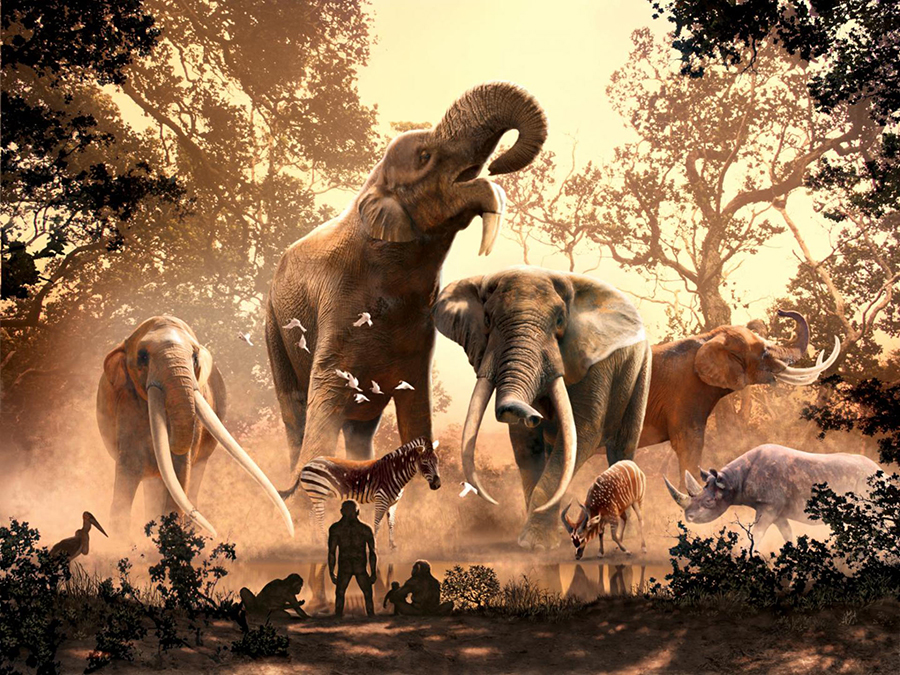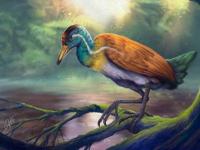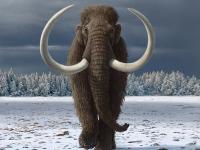Study: Climate Change Drove Prehistoric Proboscideans to Extinction

A new study, published in the journal Nature Ecology & Evolution, challenges claims that early humans slaughtered mammoths, mastodonts and prehistoric elephants to extinction over millennia.
“The worldwide extirpation of megafaunas was a radical upheaval in the recent evolutionary history of terrestrial ecosystems, with Late Pleistocene human activities often considered culpable,” said lead author Dr. Juan Cantalapiedra from the University of Alcalá and his colleagues.
“Yet, understanding these extinctions in view of long-term macroevolutionary dynamics of the megafauna lineages has been critically lacking.”
“Proboscideans, being keystone megaherbivores in Cenozoic terrestrial ecosystems, were among the most affected groups,” they noted.
“For centuries, their fossil record elucidated an evolutionary history of success and decline in equally dramatic measures, with three endangered living elephant species representing a mere vestige of a once formidable clade high in both taxonomic diversity and ecomorphological disparity, which spread across Africa, Eurasia and the Americas.”
“Therefore, proboscidean evolution poses an invaluable case study for palaeobiologists to explore causes of uneven distribution in biodiversity across phylogeny and evolutionary history.”
In the study, the researchers re-examined the rich fossil record of proboscideans in its entirety and investigated the interactions between their diversification and the timing of their evolution.
They compiled a dataset for extinct and living proboscideans with unprecedented detail, which consists of 185 species, 2,130 fossil occurrences, and 17 traits (such as body size, skull shape and the chewing surface of their teeth).
By investigating these traits, they discovered that all proboscideans fell within one of eight sets of adaptive strategies.
“Remarkably for 30 million years, the entire first half of proboscidean evolution, only two of the eight groups evolved,” said co-author Dr. Zhang Hanwen, a researcher in the School of Earth Sciences at the University of Bristol.
“Most proboscideans over this time were nondescript herbivores ranging from the size of a pug to that of a boar.”
“A few species got as big as a hippo, yet these lineages were evolutionary dead-ends. They all bore little resemblance to elephants.”
“The course of proboscidean evolution changed dramatically some 20 million years ago, as the Afro-Arabian plate collided into the Eurasian continent.”
“Arabia provided crucial migration corridor for the diversifying mastodont-grade species to explore new habitats in Eurasia, and then into North America via the Bering Land Bridge.”
“The immediate impact of proboscidean dispersals beyond Africa was quantified for the very first time in our study,” Dr. Cantalapiedra said.
“Those archaic North African species were slow-evolving with little diversification, yet we calculated that once out of Africa proboscideans evolved
“One case in point being the massive, flattened lower tusks of the shovel-tuskers. Such co-existence of giant herbivores was unlike anything in today’s ecosystems.”
By 3 million years ago the elephants and stegodonts of Africa and eastern Asia seemingly emerged victorious in this unremitting evolutionary ratchet.
However, environmental disruption connected to the coming Ice Ages hit them hard, with surviving species forced to adapt to the new, more austere habitats.
The most extreme example was the woolly mammoth, with thick, shaggy hair and big tusks for retrieving vegetation covered under thick snow.
The scientists identified final proboscidean extinction peaks starting at around 2.4 million years ago, 160,000 and 75,000 years ago for Africa, Eurasia and the Americas, respectively.
“It is important to note that these ages do not demarcate the precise timing of extinctions, but rather indicate the points in time at which proboscideans on the respective continents became subject to higher extinction risk,” Dr. Cantalapiedra said.
Unexpectedly, the results do not correlate with the expansion of early humans and their enhanced capabilities to hunt down megaherbivores.
“We didn’t foresee this result. It appears as if the broad global pattern of proboscidean extinctions in recent geological history could be reproduced without accounting for impacts of early human diasporas,” Dr. Zhang said.
“Conservatively, our data refutes some recent claims regarding the role of archaic humans in wiping out prehistoric elephants, ever since big game hunting became a crucial part of our ancestors’ subsistence strategy around 1.5 million years ago.”
“Although this isn’t to say we conclusively disproved any human involvement. In our scenario, modern humans settled on each landmass after proboscidean extinction risk had already escalated. An ingenious, highly adaptable social predator like our species could be the perfect black swan occurrence to deliver the coup de grace.”
_____
J.L. Cantalapiedra et al. The rise and fall of proboscidean ecological diversity. Nat Ecol Evol, published online July 1, 2021; doi: 10.1038/s41559-021-01498-w
Source: www.sci-news.com/








